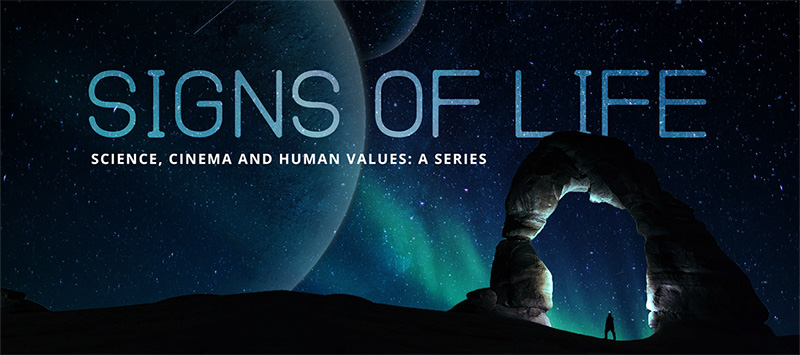Assisted Suicide Is Not Compassion
This is Issue 9 of the American Reports Series.
*To view a map of assisted suicide legislation in the United States, click here.
Introduction
For the last twenty years, the United States has been subjected to an unremitting, well- financed,[1] and intensely emotional campaign to legalize assisted suicide as a supposedly compassionate way to help end the suffering of people with terminal illnesses. Assisted suicide became prominent in the public square with the late Jack Kevorkian’s notorious campaign that resulted in the deaths of at least 130 people from 1991-1999, ending only when Kevorkian was finally imprisoned for murder.[2] Concerted efforts have also been made all around the country to pass laws permitting doctor-prescribed death. While the movement has made gains, it has been slow going. As of this writing, only three states have formally legalized assisted suicide: Oregon voters approved a law in 1994 allowing doctors to prescribe lethal doses of barbiturates to patients diagnosed with six months or less to live.[3] Washington voters followed suit in 2008.[4] The Vermont legislature passed a similar law in 2013.[5] But advocates have failed more often than they have succeeded. Voters rejected legalization in California (1992), Michigan (1998), Maine (2000), and Massachusetts (2012).[6] Legislatures throughout the country have repeatedly refused to pass laws permitting doctors to prescribe lethal overdoses to terminally ill patients, for example, in California, Connecticut, Hawaii, New Jersey, and Wisconsin.
There have also been a few judicial rulings on the question. In a rather muddled decision, the Supreme Court of Montana found that there is no state constitutional right to assisted suicide, but also that doctors who assist patients to die are not violating the existing public policy of Montana.[7] A trial judge in New Mexico found a constitutional right to assisted suicide in that state, but as of this writing the case is on appeal. But most cases have gone against the assisted-suicide-as-a-right position. Most notably, in 1997, the Supreme Court of the United States ruled unanimously that there is no right in the U.S. Constitution to assisted suicide.[8] Other such efforts have failed – for example, in Florida and Alaska.
The assisted suicide movement is, if anything, indefatigable. Not only is it undeterred by its failures, but it is now more energized than any other time in recent years. By the end of March of 2015, bills were introduced in twenty-five state legislatures to legalize assisted suicide.
Defining the Subject
Many people remain confused about the exact nature of assisted suicide advocacy, sometimes confusing it with other medical issues involving end-of-life care. Thus, to fully understand the subject, we must distinguish between ethical choices at the end of life that may lead to death and the poison of euthanasia/assisted suicide.
1. Refusing unwanted medical treatment is not assisted suicide: Fear of being “hooked up to machines” when one wishes to die at home has traditionally been a driving force behind the assisted suicide movement. But we all have the right to refuse medical interventions—even if the choice is likely to lead to death. Thus, a cancer patient can reject chemotherapy and a patient dying of Lou Gehrig’s disease can say no to a respirator. Indeed, in 1997, the U.S. Supreme Court ruled unanimously that the right to refuse medical treatment is completely different from assisted suicide.[9]
2. Assisted suicide/euthanasia is not the same as medical treatment for pain control: Because pain control may require strong drugs, which can cause death, assisted suicide advocates often claim that palliation and euthanasia are ethically the same under the “principle of double effect.” But this is all wrong:
- Any legitimate medical treatment can unintentionally lead to death, including pain alleviation. In assisted suicide death is the intended effect.
- We would never say that a patient who died during open heart surgery was euthanized. Similarly, a patient who dies from the unintended side effects of pain control has not been assisted in suicide or euthanized.
- Pain control experts state that aggressive pain control generally does not shorten life.[10]
3. Assisted suicide/euthanasia is antithetical to hospice: Hospice was founded by the great medical humanitarian Dame Cicely Saunders in the late 1960s as a reform movement to bring the care of the dying out of isolated hospitals and into patients’ homes or non-institutional local care facilities. Its purpose is to provide dying people with proper treatment of pain and other disturbing symptoms as well as to render spiritual, psychological, and social support toward the end that life be lived as fully as possible until natural death.
In contrast, assisted suicide is about rushing death, making it happen sooner rather than later through lethal actions. Or to put it another way: Hospice is about living. Assisted suicide/euthanasia is about dying. As the noted palliative care expert and assisted suicide opponent Dr. Ira Byock has written, “There’s a distinction between alleviating suffering and eliminating the sufferer — between enabling someone to die gently of their disease and ending that person’s life with a lethal pill or injection.”[11]
4. Assisted suicide/euthanasia are acts that intentionally end life: In contrast to the above, the intended purpose of assisted suicide and euthanasia is to end life, e.g., to kill. In assisted suicide, the last act causing death is taken by the person who dies, for example, ingesting a lethal prescription of barbiturates. In euthanasia, the death is a homicide, an act of killing taken by a third person, such as a doctor injecting a patient with poisonous drugs.
The “Slippery Slope” Is All Too Real
Since the emergence of the contemporary euthanasia/assisted suicide movement in the 1980s, opponents have warned against the “slippery slope” that would be set in motion once assisted suicide and/or euthanasia became legal and accepted. The term refers to the commonsense worry that once killing is accepted as a permissible method of alleviating human suffering—the core premise of assisted suicide/euthanasia philosophy—it will lead inexorably to an ever-expanding regimen of hastening death.
In the early days of the debate, such arguments were dismissed by assisted suicide supporters as mere alarmism. But the experience of legalized euthanasia in the Netherlands and Belgium, as well as legal assisted suicide in Switzerland, provides ample evidence that the slippery-slope hypothesis is true.
Netherlands: Euthanasia wasn’t technically legal in the Netherlands until 2002. But beginning in the 1970s—after a court decision refusing to punish a doctor who euthanized her elderly mother—doctors were promised that they would not be prosecuted for lethally injecting or assisting the suicides of patients if they followed protective guidelines. In 1993, the Dutch Parliament legally formalized the informal system of euthanasia permissiveness.[12] Today, the law’s requirements include:
- The request must be made entirely of the patient’s own free will and not under pressure from others.
- The patient must have a lasting longing for death.
- The request must be made repeatedly over a period of time.
- The patient must be experiencing unbearable suffering.
- The patient must be given alternatives to euthanasia and time to consider these alternatives.
- There must be no reasonable alternatives to euthanasia as the means to relieve suffering.
- Doctors must consult with at least one colleague who has faced the question of euthanasia before.
- Only a doctor can euthanize a patient.
In actual practice these guidelines have been ignored routinely or interpreted by courts to the point that they offer scant protection for the weak and vulnerable. Nor have they prevented a steady expansion of the categories of people who are euthanized. Today in the Netherlands not only are terminally ill people who ask to be killed euthanized, but also the chronically ill, the elderly “tired of life,” and those with mental illnesses.
Euthanizing the depressed and mentally ill was approved by the Supreme Court of the Netherlands in 1994 in a case that opened the door to the killing of people facing psychological distress.[13] Psychiatrist Boutdewijn Chabot assisted the suicide of Hilly Bossher, a middle-aged, healthy woman who had lost her two children, one to suicide and the other to illness. Bossher became obsessed about being buried between her two dead children and met Chabot at a Dutch Euthanasia Society gathering.
Chabot took Bossher as a patient but did not attempt to treat her because Bossher feared that treatment would “loosen the bonds with her deceased sons.”[14] After four meetings with Bossher over a period of about five weeks, the psychiatrist assisted her suicide. The Dutch Supreme Court validated Chabot’s act, ruling that suffering is suffering, whether physically or mentally caused, and that Chabot’s actions were acceptable medical practice. (He was criticized for not having a second psychiatrist personally examine her.)
In recent years, advocacy has appeared in Dutch medical journals urging psychiatrists to increase their use of euthanasia as a treatment for the severely mentally ill. For example, an article published in the Dutch-language Journal of Psychiatry (tijdschrift voor psychiatrie) in 2011 states:
Assisted suicide, as a last resort in psychiatry, legally admissible since 2002, recently legitimized in practice. The midwife [of] Death is now appropriate for psychiatric reach patients, representing an emancipation of the psychiatric patient and psychiatry itself.[15]
Consider: Killing called “liberation.” Dutch psychiatrists apparently heeded the call for greater participation in euthanasia. In 2012, fourteen mentally ill patients were euthanized by their psychiatrists. In 2013, that number tripled to 42.[16]
Infants born with serious disabilities and terminal conditions are openly euthanized by Netherlander pediatricians and neonatologists without legal consequence, even though hastening the death of babies is clearly illegal. According to a 1997 study published in the British medical journal The Lancet, approximately eight percent of Dutch infants who died in 1995—not eight percent of all infants—were euthanized by doctors who administered drugs “with the explicit aim of hastening death.”[17] If the study, which looked into the deaths of 338 infants between August and November 1995 is accurate, and with approximately 1,000 infants dying in the Netherlands each year (1,041 in 1995), approximately 80 seriously ill and disabled babies were murdered each year by their doctors without legal consequence. A follow-up investigation in the same journal in 2005 came to a nearly identical conclusion.[18]
Dutch infanticide came completely out of the shadows in 2004 with the publication of the “Groningen Protocol for Euthanasia in Newborns” in a Dutch medical journal. The protocol was drawn up by doctors at the Groningen Academic Hospital—led by Dr. Eduard Verhagen, head of the hospital’s pediatric department. Infanticide is a clear violation of the existing euthanasia law which requires competent patients to request death voluntarily. No matter, Verhagen explained, “It’s time to be honest about the unbearable suffering endured by newborns with no hope of a future,” adding his wish that the Groningen Protocol would serve as a nationwide guide to the killing of seriously ill or disabled infants.[19]
Many Dutch doctors also practice nonvoluntary euthanasia; that is, they kill patients who have not asked to be killed. The exact number of such killings is hard to quantify definitively and is a matter of some dispute. In 2010, the Dutch government reported 310 cases of “termination without request or consent,” clear violations of Dutch law that went unprosecuted and unpunished.[20] How many went unreported will never be known.
Belgium: If the Netherlands slid down the “slippery slope,” Belgium jumped off the cliff head first. Belgium legalized euthanasia in 2002. The very first euthanasia death of a multiple sclerosis patient violated the then-new law’s guidelines.[21] No matter: Guidelines are meant to provide assurance more than they are to actually restrict medicalized killing. Indeed, since 2002, the country has experienced a crescendo of increasingly radical medicalized killings and/or permissions to kill that demonstrate the logical consequences of accepting the premise that killing is an acceptable answer to human suffering. Here are just a few examples:
Joint Euthanasia Deaths of the Elderly: At least three elderly couples who didn’t want to live apart died together in joint euthanasia killings. The first was in 2011—the couple was not seriously impaired and the euthanasia was carried out with the full knowledge and apparent approval of their community.[22] The second known joint euthanasia took place two years later when an elderly couple who had been married 64 years—both seriously ill, in this example—were euthanized surrounded by their children and grandchildren.[23] The third joint euthanasia—of a still-healthy couple who “feared the future”—was performed by a doctor procured by the couple’s own son.[24]
There have also been joint euthanasia deaths of siblings in Belgium. Identical twins, age 45, were both born deaf. They asked for joint euthanasia after learning they were in danger of losing their eyesight. Doctors at Brussels University Hospital euthanized the two men by lethal injection in 2012.[25]
Euthanasia after Sexual Exploitation by Psychiatrist: “Ann G.” was a suicidal anorexia patient who publicly accused her previous psychiatrist of persuading her into having sexual relations. When the psychiatrist — who admitted the charge — was not severely disciplined, Ann went to a second psychiatrist for euthanasia. She died at age 44.[26]
Euthanasia for a Botched Sex Change: Nathan Verhelst underwent a sex change surgery from woman to man, and then was euthanized because of despair over the result by the same doctor who lethally injected the twins.[27]
Euthanasia for Mental Illness: As in the Netherlands, Belgian psychiatrists apply euthanasia as a “treatment” for mental illness. Humo magazine reported in 2015 that about 50 mentally ill patients are euthanized annually.[28]
Assisted Suicide for Children: Belgium legalized assisted suicide for children in 2014, with no lower age limit.[29]
Euthanasia Joined with Organ Harvesting: Belgian doctors pioneered the conjoining of voluntary euthanasia with organ donation. Several medical journals have had reports about the practice. For example, a 2011 study extolled successful voluntary euthanasia killings and subsequent lung transplants from four patients who wanted to die; three were disabled and one was mentally ill.[30] (Following Belgium’s lead, the government in the Netherlands is preparing regulations to do the same in that country.)[31]
Switzerland: Swiss law has permitted assisted suicide since 1942 so long as the assister does not have “selfish motives.” For years, nothing much came of it, but with the emergence of the modern euthanasia movement, enterprising believers in assisted suicide established suicide clinics to which people could travel from around the world—a phenomenon known as “suicide tourism.”
The death clinics are becoming increasingly popular. A report published in 2013 revealed that 1,701 people have died at one clinic (Dignitas) alone since 1998, with 205 killing themselves within the facility in 2013.[32] The people who die in these clinics are not limited to the terminally ill and indeed sometimes include healthy people. For example, in recent months, an elderly Italian woman died at a suicide clinic because she was upset about losing her looks. Her family only learned she was dead when the clinic sent the urn containing her ashes in the mail.[33] There have also been joint suicides, as in Belgium, of elderly couples who don’t want to live apart.[34] The Swiss Federal Supreme Court, like its counterpart in the Netherlands, has also declared a right to assisted suicide for the mentally ill.[35]
Canada: In 2015, the Canadian Supreme Court legalized euthanasia as a Charter right throughout the country. Of particular interest to this discussion, the unanimous ruling started a Canadian euthanasia regime at the very place down the slippery slope that took decades to evolve in the Netherlands, and years in Belgium.
The ruling grants competent adults a right to die if they have an “illness, disease, or disability that causes enduring suffering that is intolerable to the individual,” including “psychological” pain. A treatable condition can qualify as “irremediable” if the patient chooses not to pursue available remedies.[36] So an “irremediable” condition that permits life-termination may actually be wholly remediable in fact, except that the patient would rather die than receive care.
The Court has held the ruling in abeyance for one year to permit the Canadian Parliament to enact laws consistent with its finding, so further details may be forthcoming. This much is sure: Netherlands/Belgium style euthanasia has penetrated the North American continent.
Oregon’s Abuses
Oregon legalized assisted suicide by voter initiative in 1994, with the law going into effect in 1997. Since then, well over 700 people have committed suicide under the law, legally assisted by doctors.
When the horrors of Belgium, the Netherlands, and Switzerland are discussed in a paper such as this, advocates for doctor-prescribed death usually reply that Oregon proves that whatever abuses might happen overseas, they need not happen here. But there have been abuses in Oregon — the media just has not written much about them.
Besides, how would supporters of assisted suicide know the law has worked without abuse? State oversight depends almost entirely on physician self-reporting, and the state agency in charge of oversight readily admits it does not know about assisted suicides that are not reported. Moreover, even if an abuse is reported or somehow uncovered, Oregon officials admitted to a United Kingdom House of Lords investigative committee that Oregon’s oversight agency does not have the legal authority—or budget—to conduct independent inquiries even if a legal violation is uncovered.[37] The House of Lords was considering legalization of assisted suicide in that country.
Perhaps that is why Dr. Kathleen Foley and psychiatrist Herbert Hendin—the nation’s foremost palliative care expert and a premier suicide prevention expert, respectively—concluded in their published Michigan Law Review study that “the evidence strongly suggests” that the Oregon law’s “safeguards are circumvented in ways that are harmful to patients.”[38]
Meanwhile, data published annually by the Oregon Health Department show that most requests for assisted suicide have little to do with pain, but generally involve future fears about losing autonomy or the ability to engage in enjoyable activities and possible loss of dignity.[39] These are important matters to be sure, but they don’t require lethal prescriptions to ameliorate.
Moreover, there have been cases of clear or apparent abuse.
Kate Cheney: The Kate Cheney assisted suicide reported in the (Portland) Oregonian, demonstrated the flexibility of Oregon’s protective guidelines.[40] Cheney, age 85, was diagnosed with terminal cancer and sought assisted suicide. But there was a problem: Cheney was probably in the early stages of dementia, raising significant questions about her mental competence. So, rather than prescribe lethal drugs, her doctor referred her to a psychiatrist.
The psychiatrist found that Cheney had a loss of short-term memory causing the psychiatrist to write in his report that while the assisted suicide seemed consistent with Cheney’s values, “she does not seem to be explicitly pushing for this.” He also determined that she did not have the “very high capacity required to weigh options about assisted suicide.”
Advocates of legalized assisted suicide might, at this point, smile happily and point out that such refusals are the way the law is supposed to operate to protect the vulnerable. But that wasn’t the end of her story. According to the Oregonian, Cheney appeared to accept the psychiatrist’s verdict but her daughter most explicitly did not. To circumvent the rejection of assisted suicide, the family next did what anyone in Oregon wanting assisted suicide can do if refused by one physician: they went doctor shopping.
Kaiser Permanente, Cheney’s HMO, allowed another opinion. This time the psychiatric consultation was with a clinical psychologist rather than an M.D.-psychiatrist. The psychologist worriedly wrote that Cheney’s decision to die “may be influenced by her family’s wishes.” Still, despite these reservations, she determined that Cheney was competent to commit suicide.
The final decision to approve the death was made by a Kaiser HMO ethicist/ administrator. The elderly woman wanted to die because she was afraid of not being able to attend to her personal hygiene. After interviewing Cheney, the Kaiser administrator was satisfied that she was competent and approved the lethal prescription.
What happened next in the Cheney case illustrates the potential for problems that can arise after the lethal prescription is issued—a point at which there are no protective guidelines or controls. (For example, the prescribing doctor need not be present at the suicide). Cheney did not take her lethal drugs right away. She first asked to die immediately after her daughter had to help her shower, after an accident with her colostomy bag. But she quickly changed her mind. Then Cheney went to a nursing home for a week so that her family could have some respite from care giving.
The time spent in the nursing home may have pushed Cheney into wanting immediate death. As soon as she was brought home she declared her desire to take the pills. Her grandchildren were quickly called to say their goodbyes, and Cheney swallowed her prescribed poison. She died with her daughter at her side, telling her what a courageous woman she was.
If Cheney was depressed when she swallowed the poison, there was no doctor available to diagnose it. If she was coaxed or pressured into taking the pills (which was not contended or implied in the Oregonian story), there were no witnesses from outside the family to protest. Indeed, other than what family members told the Oregonian reporter, we don’t know what happened at Kate Cheney’s death since the Oregon guidelines do not require any independent assessment of assisted suicide deaths.
Michael Freeland: Michael P. Freeland was diagnosed with lung cancer in 2000. Freeland, as it happens, died naturally on December 5, 2002. Oregon law requires a finding that the patient can be reasonably expected to die within six months before a lethal prescription is authorized. But Freeland’s death occurred nearly two years after receiving the lethal prescription, demonstrating that patients who are not terminally ill under law may still receive lethal prescriptions.
On January 23, 2002, Freeland was admitted to Providence Portland Medical Center for depression with suicidal and possibly homicidal thoughts. A social worker went to Freeland’s home and found it “uninhabitable,” with “heaps of clutter, rodent feces, ashes extending two feet from the fireplace into the living room, lack of food and heat, etc. Thirty-two firearms and thousands of rounds of ammunition were removed by the police.” Amazingly, the “lethal medications” that had been prescribed more than a year before were left in the house—presumably in case Freeland wanted to use them.[41]
Freeland was hospitalized for a week and then discharged on January 30, 2002. The discharging psychiatrist noted with approval that the guns had been removed, “which resolves the major safety issue,” but wrote that Freeland’s lethal prescription remained “safely at home.” Freeland was permitted to keep the overdose even though the psychiatrist reported he would “remain vulnerable to periods of delirium.” In-home care was considered likely to assist with this problem, but a January 24 chart notation indicated that Freeland “does have his life-ending medications that he states he may or may not use, so that [in-home care] may or may not be a moot point.”[42]
Freeland didn’t kill himself. Instead, he had called Physicians for Compassionate Care—an anti-assisted suicide nonprofit organization—that arranged for his care. Freeland was properly treated for depression with medication. He received good pain control, including a morphine pump. Best of all, he was reunited with his estranged daughter and died knowing she loved him and would cherish his memory.[43]
Based on their review of the facts and circumstances surrounding Freeland receiving a lethal prescription, including his medical records, Dr. N. Gregory Hamilton and Catherine A. Hamilton reached important conclusions about the danger assisted suicide legalization poses to ill Oregonians with suicidal desires, and the law’s discriminatory effect on patients as well as its impact on mental health professionals. They write in their study, presented at the 2004 American Psychiatric Association Annual Meeting,[44] and later published in The American Journal of Psychiatry: [45]
The legalization of doctor-assisted suicide in Oregon has resulted in the introduction of competing paradigms—the traditional clinical approach [Removing lethal means is central to the clinical treatment of suicide symptoms] and the assisted suicide competency model [providing lethal means]—for responding to suicidal thoughts and behaviors in seriously ill individuals…These competing models appear to be based on incompatible underlying assumptions about the value of protecting life depending on predictions of how long a patient might live…We conclude that the attempt to mix models is confusing to both clinicians and patients and endangers seriously ill patients, particularly those with a history of pre-existing mental illness.
Barbara Wagner and Randy Stroup: Then there are the well-documented cases of Barbara Wagner and Randy Stroup. Both had recurrent terminal cancer while on Oregon’s version of Medicaid, a program in which there is explicit rationing barring coverage for some life-extending (as opposed to curative) chemotherapy. Their doctors prescribed chemotherapy to extend their lives. But—in a decision relevant to our current health-care-reform debate—state bureaucrats refused to cover their treatments because the medical literature indicated that neither could be expected to survive for five years with the prescribed drugs. Instead, they offered Wagner[46] and Stroup[47] funding for their assisted suicides. When their cases hit the news, they caused great embarrassment to assisted suicide advocates. Wagner was eventually offered free chemotherapy by the drug company. Stroup’s denial of treatment was later reversed on appeal. Both died naturally from their cancers.
Conclusion
Assisted suicide and euthanasia would profoundly change—are profoundly changing—the ethics of medicine and cultural views about the value and worth of people with difficult lives, whether caused by illness, disability, or mental anguish. And it is hurting many of those who strive to cope with these conditions, but repeatedly are told that their lives are not worth protecting from suicide, and indeed that, if they want to die, society will allow doctors to provide the means.
In this regard, hearken to the words of Robert Salamanca of Pleasanton, California, who died naturally of Lou Gehrig’s disease. Salamanca believed strongly that assisted-suicide advocacy diminished the value of the lives of people experiencing illnesses and disabilities. Indeed, he felt so strongly about this he wrote an important column in the San Francisco Chronicle, stating in part:
Euthanasia advocates believe they are doing people like me a favor. They are not. The negative emotions toward the terminally ill and disabled generated by their advocacy is actually at the expense of the “dying” and their families and friends. We often feel disheartened and without self-assurance because of a false picture of what it is like to die created by these enthusiasts who prey on the misinformed.
What we, the terminally ill, need is exactly the opposite—to realize how important our lives are. And our loved ones, friends, and indeed, society need to help us feel that we are loved and appreciated unconditionally.[48]
Salamanca was right. The proper approach to death, dying, and other sources of human suffering is to increase our levels of care and compassion, not permit doctors to coolly write lethal prescriptions or, as in Europe and soon Canada, “treat” physical or psychological suffering with a lethal jab.
Whatever our beliefs might be about an idealized system of assisted suicide, in the real world of America today, legalizing assisted suicide would be dangerous and reckless. With our dysfunctional health care system, high rates of elder abuse, already alarmingly significant suicide levels, pronounced economic uncertainties, divisions of race, gender, religion, sexual orientation, class, and immigration status, and the concomitant lack of mutual trust, legalizing assisted suicide would be bad medicine and even worse public policy.
Award winning author, Wesley J. Smith, is a senior fellow at the Discovery Institute’s Center on Human Exceptionalism and a consultant to the Patients Rights Council.
[1] According to a report by the Better Business Bureau, Compassion and Choices—previously known as the Hemlock Society–the best-known assisted suicide advocacy group in the country. For fiscal 2014, it reported income of $19,296,447. Its executive director, Barbara Coombs Lee, received $205,755 compensation in 2012. http://www.give.org/charity-reviews/national/health/compassion-and-choices-in-denver-co-1112
[2] Death with Dignity National Center, “Death with Dignity Around the U.S.,” March 20, 2015, http://www.deathwithdignity.org/advocates/national
[3] Oregon’s “Death with Dignity Act,” went into legal effect in October 1997. https://public.health.oregon.gov/ProviderPartnerResources/EvaluationResearch/DeathwithDignityAct/Pages/index.aspx
[4] Washington “Death with Dignity Act,” http://app.leg.wa.gov/rcw/default.aspx?cite=70.245
[5] Vermont “Patient Choice and Control at the End of Life Act,” http://healthvermont.gov/family/end_of_life_care/patient_choice.aspx
[6] Patients Rights Council, “Attempts to Legalize,” http://www.patientsrightscouncil.org/site/failed-attempts-usa/
[7] Baxter v. Montana, 224 P 3d 1211 (Mont. 2009). http://law.justia.com/cases/montana/supreme-court/2009/50c59956-3100-468d-b397-4ab38f6eda4d.html
[8] Washington v. Glucksberg, 521 U.S. 702 (1997). https://supreme.justia.com/cases/federal/us/521/702/case.html
[9] Vacco v. Quill, 521 U.S. 793 (1997) https://www.law.cornell.edu/supct/html/95-1858.ZO.html
[10] Harding A, Morphine Eases Pain, Doesn’t Shorten Life. Reuters, April 4, 2007, http://www.reuters.com/article/2007/04/04/us-morphine-life-idUSKIM44142020070404
[11] Prescott B. “The Best Care Possible,” Interview with Dr. Ira Byock, Caring.com, https://www.caring.com/articles/the-best-care-possible
[12] Simons M. Dutch Parliament Approves Law Permitting Euthanasia. New York Times, February 10, 1993, http://www.nytimes.com/1993/02/10/world/dutch-parliament-approves-law-permitting-euthanasia.html
[13] Judgment Chabot HR, June 21, 1994, NJ 1994, 656.
[14] Kaufman G.(1994). State v Chabot: A Euthanasia Case Note. Ohio Northern University Law Review 20(3): 817
[15] tijdschrift voor psychiatrie 53 (2011) 8 (Google translation).
[16] Caldwell S. Number of Mentally Ill Patients Euthanized in the Netherlands Trebles. Daily Mail, October 3, 2014, http://www.dailymail.co.uk/news/article-2779624/Number-mentally-ill-patients-killed-euthanasia-Holland-trebles-year-doctors-warn-assisted-suicide-control.html
[17] van der Heide A, van der Maas PJ, van der Wal G, de Graaf CLM, Kester JG, Koilee LAA, de Leeuw R, Holl RA. (1997). Medical End-of-Life Decisions Made for Neonates and Infants in the Netherlands. The Lancet 350: 251.
[18] Vrakking AM, van der Heide A, Onwuteaka-Philipsen BD, Keij-Deerenberg IM, van der Maas PJ, van der Wal G.. (2005). Medical End-of-Life Decisions Made for Neonates and Infants in the Netherlands, 1995-2001.” The Lancet 365: 1329-1331
[19] Groningen Hospital press release, December 10, 2004. https://www.umcg.nl/EN/corporate/News/Pages/Paediatricianscallfornationwideprotocolfortheendingoflifeofunbearablyandincureablysufferingnewborns.aspx
[20] Statline Statistics Netherlands, “Deaths by Medical End-of-Life Decision,” July 11, 2012, http://statline.cbs.nl/StatWeb/publication/?VW=T&DM=SLen&PA=81655ENG&LA=en
[21] Osborn A. Belgian Outcry Over First Mercy Killing Under New Law. The Guardian, October 8, 2002. http://www.theguardian.com/world/2002/oct/09/andrewosborn
[22] Smith WJ. Culture of Death: Elderly Belgian Couple Euthanized Together [blog]. National Review, Human Exceptionalism. March 31, 2011, http://www.nationalreview.com/human-exceptionalism/322963/culture-death-elderly-belgian-couple-euthanized-together-wesley-j-smith
[23] The World Post. Leopold Dauwe and Paula Raman, Belgian Elderly Couple, Euthanized Together. June 26, 2013, http://www.huffingtonpost.com/2013/06/26/leopold-dauwe-paula-raman-euthanized_n_3504348.html?utm_hp_ref=world
[24] Caldwell S. Elderly couple to die together by assisted suicide even though they are not ill. Daily Mail, September 25, 2014. http://www.dailymail.co.uk/news/article-2770249/Healthy-OAP-couple-die-assisted-suicide-Husband-wife-support-three-children.html
[25] Waterfield B. Belgian Identical Twins in Unique Mercy Killing. The Telegraph, January 13, 2013, http://www.telegraph.co.uk/news/worldnews/europe/belgium/9798778/Belgian-identical-twins-in-unique-mercy-killing.html
[26] Cook M. Another Speedbump for Belgian Euthanasia. Bioedge, February 8, 2013, http://www.bioedge.org/bioethics/bioethics_article/10388
[27] Gayle D. Transsexual, 44, Elects to Die by Euthanasia After Botched Sex-Change Operation. Daily Mail, October 1, 2013, http://www.dailymail.co.uk/news/article-2440086/Belgian-transsexual-Nathan-Verhelst-44-elects-die-euthanasia-botched-sex-change-operation.html
[28] “Annual 50 Times Euthanasia for Mental Illness,” Humo, March 20, 2015 (Google translation). http://www.humo.be/actua/326521/jaarlijks-vijftig-keer-euthanasie-om-psychiatrische-redenen
[29] Associated Press. Belgium Passes Law Extending Euthanasia to Children of All Ages. February 13, 2014.
[30] Van Raemdonck D, Verleden GM, Dupont I, Ysebaert D, Monbaliu D, Neyrinck A, Goosemans W, Decaluwe H, De Leyn P, Nafteux P, Lerut T. (2011). Initial Experience with Transplantation of Lungs Recovered from Donors After Euthanasia. Applied Cardiopulmonary Pathophysiology 15: 38-48
[31] Van Jaarsveldt J. Euthanasia Should Lead to Organ Donation: Health Minister. NLTimes, November 26, 2014, http://www.nltimes.nl/2014/11/26/euthanasia-lead-organ-donation-health-minister/
[32] http://www.dignitas.ch/images/stories/pdf/statistik-ftb-jahr-wohnsitz-1998-2013.pdf
[33] Roberts H. Italian Woman, 85, Ends Her Life at Swiss Euthanasia Clinic Because She Was Upset About Losing Her Looks. Daily Mail, February 20, 2014. http://www.dailymail.co.uk/news/article-2564023/Italian-woman-85-ends-life-Swiss-Dignitas-clinic-upset-losing-looks.html
[34] Weaver M. British Conductor Dies with Wife at Assisted Suicide Clinic. The Guardian, July 14, 2009. http://www.theguardian.com/society/2009/jul/14/assisted-suicide-conductor-edward-downes
[35] Appel JM (2007). A Suicide Right for the Mentally Ill? A Swiss Case Opens a New Debate.. Hastings Center Report 37 (3): 21–23
[36] Carter v. Canada (Attorney General), 2015 SCC 5 (2015) http://scc-csc.lexum.com/scc-csc/scc-csc/en/item/14637/index.do
[37] House of Lords Select Committee on the Assisted Dying for the Terminally Ill Bill, HL, p. 266, Q. 615. http://www.publications.parliament.uk/pa/ld200405/ldselect/ldasdy/86/86ii.pdf
[38] Hendin H, Foley K. (2008). Physician-Assisted Suicide in Oregon: A Medical Perspective. Michigan Law Review 106: 1613-1645
[39] Oregon Public Health Division, “Oregon Death with Dignity Act, 2013,“ https://public.health.oregon.gov/ProviderPartnerResources/EvaluationResearch/DeathwithDignityAct/Documents/year16.pdf
[40] Barnett EH. Is Mom Capable of Choosing to Die? The Oregonian, October 17, 1999, G1&2.
[41] Hamilton NG, Hamilton CA. (2005). Competing Paradigms of Response to Assisted Suicide Requests in Oregon. The American Journal of Psychiatry 162(6): 1060-1065. (Freeland was later identified as the “Patient A” in the paper).
[42] Id.
[43] Id.
[44] Hamilton NG and Hamilton C. 2004. Competing paradigms of responding to assisted-suicide requests in Oregon: case report. Presented at American Psychiatric Association Annual Meeting, New York City, May 6, 2004, http://www.pccef.org/articles/art28.htm
[45] Hamilton NG, and Catherine A. Hamilton CA., (2005). “Competing Paradigms of Response to Assisted Suicide Requests in Oregon,”. The American Journal of Psychiatry, Vol. 162(, Issue 6): 1060-1065
[46] Harding S. Letter Noting Assisted Suicide Raises Questions. KATU.com, July 30, 2008. http://www.katu.com/news/26119539.html
[47] Springer D. Oregon Offers Terminal Patients Doctor-Assisted Suicide Instead of MedicalCare Fox News, July 28, 2008. http://www.foxnews.com/story/2008/07/28/oregon-offers-terminal-patients-doctor-assisted-suicide-instead-medical-care/
[48] Salamanca R. I Don’t Want a Choice to Die. San Francisco Chronicle, February 19, 1997.





















